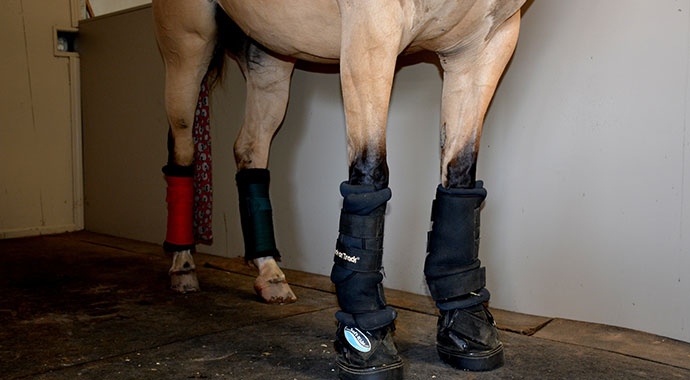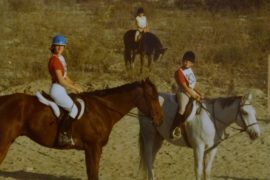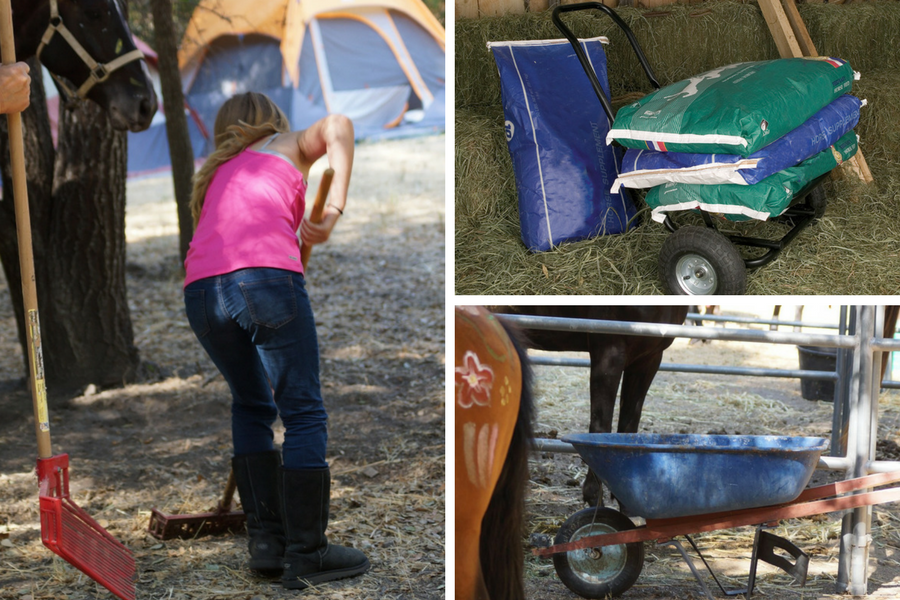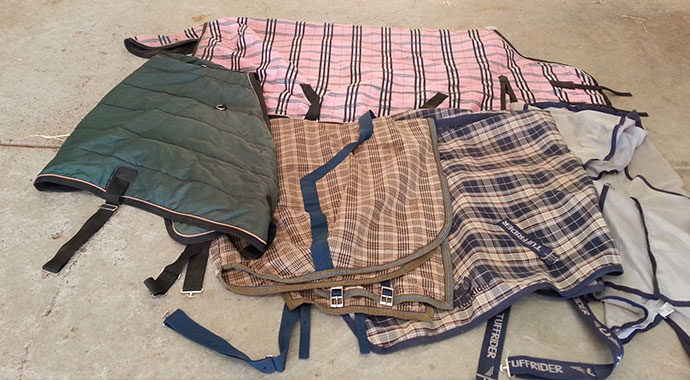Chances are if you own a horse and a horse trailer, you also have a host of various trailer safety items hiding in your tack room. From shipping boots and standing wraps to hoof protection and blankets, everyone has a different routine when it comes to getting their horse ready for hauling. I spoke to several local equestrians, from the avid trail rider to the hardcore competitor to find out some tried and true thoughts and methods regarding favorite leg protection for your horse’s legs while in the trailer.
Full Protection
Melissa Hardgrove – 20 year horse owner and Dressage Competitor
Melissa travels frequently on the statewide dressage circuit with her Dutch Warmblood, “Chester”. When asked about what she considers most important in terms of trailering her equine partner, the answer centered around the possibility for superficial injury. “My guy tends to get a little antsy in the trailer,” Hardgrove explains. “He moves around a lot and the last thing that I need when we get to a show or a lesson is to have to deal with cuts and scrapes on his legs. I chose my trailer because it provides a good, solid ride, and with shavings, I’m confident that he doesn’t so much need ‘support’, but protection.” Melissa uses above the knee and hock and over the hoof shipping boots made by “Woof Wear”. They have a tough cordura outer with hook and loop closures, and a moisture wicking fleece lining. Woof Wear also has a full line of high quality training and support boots, and can be found at most online retailers, including Dover Saddlery.
The Traditionalist
Gretchen Young – 15 year horse owner and breed show competitor
Gretchen has been showing on the Paint Horse Circuit for approximately fifteen years. She currently has two APHA geldings, “Moe” and “Berty”, that she competes with in both english and western divisions. Gretchen travels all over the United States with her boys about six months out of the year. “I do a lot of long distance trailering,” Young says. “My main concern is that my horses are comfortable and protected in the trailer, and for me that means having some good support for their legs. I learned to wrap a standing wrap when I fourteen years old, and I guess it just stuck. I feel like I have more control over how my horses arrive at a show when I’ve wrapped their legs really well for the trip.” Gretchen likes the foam padded “No Bows” with Centaur Brand standing wraps. This combination on the front and back legs provides good protection and support, but you must be confident and comfortable in your wrapping skills in order to achieve good results and avoid injury to your horse.
The Practical Approach
Mary Guisemann – 10 year horse owner and avid trail rider
Mary and her Rocky Mountain Horse gelding, “Scooter”, can be found on the local trails of the Central Coast at least three times per week. Her favorite spots are Montana de Oro, Lopez Lake and the Woodlands trails in Nipomo. They also occasionally travel throughout the state with a Rocky Mountain Horse riding club. “Scooter is amazing in the trailer, that’s one of the reasons that I bought him,” Guisemann explains. “My first Rocky was one of those horses that tried to paw his way out of the trailer every time you stopped at a light, but Scooter hardly moves at all. When we’re just loading up for a short trip I have to admit that I don’t wrap his legs at all; I’ve never felt like it was necessary. About three times a year we go up to the San Francisco area and to Tahoe, and for those longer hauls I will usually throw on a pair of standard shipping boots just to make sure he doesn’t scratch himself up. I feel like less is better; I’ve seen horses get caught up in the trailer with wraps that come undone.”
The Minimalist
Cindy Martinez – 25 year horse owner and competitor in endurance riding
Being an endurance rider, Cindy travels…a lot. She and her Arabian mare, “Lovely Sunrise”, have been partners for the last five years and have logged an average of 100 miles per year in the saddle during that time. “It’s important that my mare is comfortable in the trailer, but I tend to do more when it comes to the trailer floor and bedding than I do wrapping her legs,” Martinez says. “I heavily bed the trailer with shavings and then I use standard shipping boots. It’s always worked for me, and I’ve never noticed ‘Sunny’ complaining.” Cindy admits that she doesn’t exactly know what brand boots that she uses, “I’ve had the same four boots since I bought ‘Sunny’”, but they are your standard, everyday shipping boots, like the ones sold by Dura-Tech.
The Hybrid Approach
Sarah Williams – 30 year horse owner and competitor in Breed and NRHA Reining Shows
I admit that I am a little overly concerned with my horse’s welfare in most circumstances. I have been told on more than one occasion that I go a little overboard when it comes to leg protection, feeding, supplements, tack, riding routines, etc. That being said, I’ve tried many different methods of protection for traveling with my horses, and I have come up with something that works for me and for my horse. Because I travel a lot and I need my mare to be comfortable and ready to work when we get to a show, I want to give her all around protection and support. I use Soft Ride Boots with gel insoles on her front feet to reduce the stress and vibration of riding in the trailer; I would recommend these a thousand times over for everything from trailering to standing in a stall at shows and even to help horses with Laminitis or Founder issues (the issue of “stocking up” is virtually nullified when using these boots). I use Back on Track No Bows with traditional standing wraps on her hind legs for good support and protection and Back on Track Quick Wraps on her front legs. I love the Back on Track products for their therapeutic attributes; they are created with a ceramic blend material that helps to reflect the horse’s own body heat in order to reduce or prevent swelling, “stocking up”, etc. I use the same wraps at shows when my mare is stuck in a 12×12 box stall for an extended period of time. I take trailer safety and comfort seriously, and I think that it helps with my horse’s performance.
In an effort to make sense of the obvious different trains of thought on wrapping legs in the trailer, I spoke to several vets and employees from Alamo Pintado Equine Hospital. In a nutshell, the advice that I received was that we have little control over what can happen to our horses in the trailer, and thus “some protection is better than no protection”. Support bandages or standing wraps were the clear winners for long hauls and regular “shipping boots” were suggested for shorter excursions with horses who are “good in the trailer”. For the minimal time that it takes to apply bandages or wraps before walking your horse into the trailer, you will be reaping much greater rewards in the event that something does go wrong.
So, as you can see, there are many different ideas when it comes to what is best for “dressing your horse” for travel. I think what it comes down to is a blend of what is necessary in terms of your horse’s time in the trailer, your horse’s behavior in the trailer, and simply what you as an owner feel comfortable with. The most important thing is that you consider all of your options and weigh your choices thoughtfully, because trailering is perhaps the most unnatural thing that we ask our horses to do on a regular basis, and the simple fact that they cooperate with us in the matter is quite amazing. I like following the rule of “always be prepared”.




